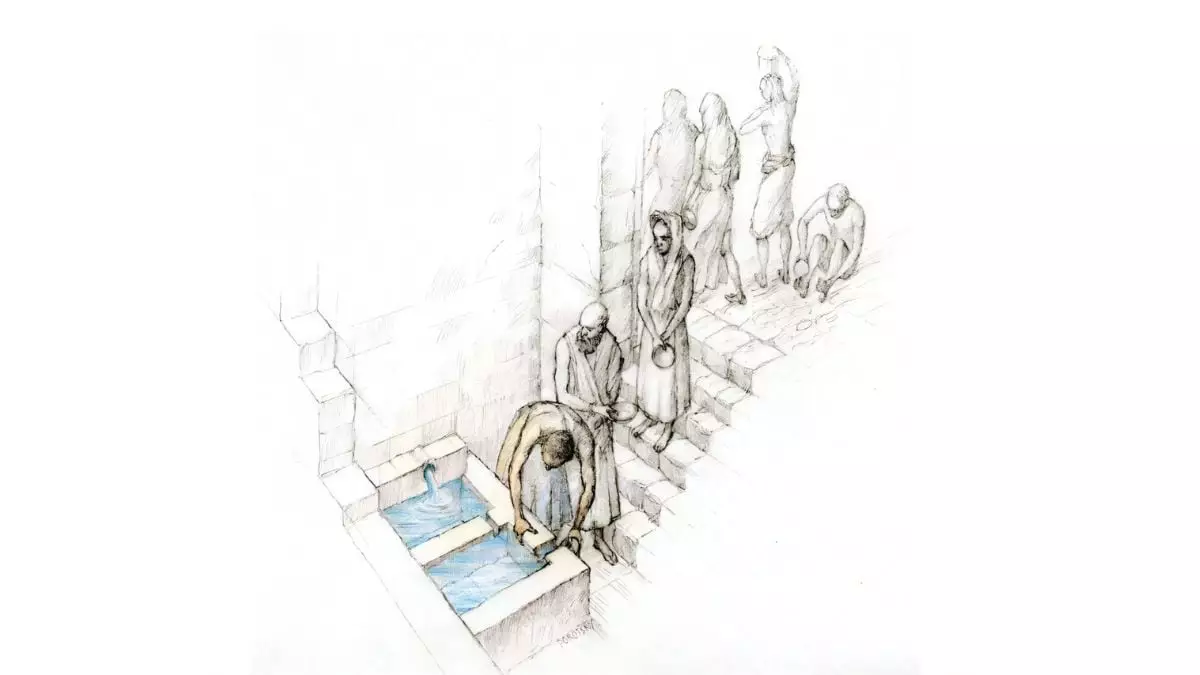The intricate tapestry of ancient civilizations often reveals more than just historical narratives; it unveils the deep-rooted beliefs and practices that shaped their cultures. A recent archaeological discovery in northern Israel at a hallowed sanctuary hints at the profound significance of ritual cleansing within the religious practices of the ancient Israelites. This new evidence offers a glimpse into an otherwise enigmatic world where water symbolized purification and spiritual rebirth.
A Bathhouse of Rituals: More than Meets the Eye
At the center of this excavation is an intriguing bathhouse believed to have been reserved for priests who engaged in sacred rituals. The sanctuary features two distinct spaces distinctly accented with yellow and blue plaster. These hues, while seemingly aesthetic choices, may convey rich symbolic meaning to the practitioners of that era. The layout prompts questions about the nature of their rituals, indicating that water was not just a physical cleansing agent but a vital element for spiritual rejuvenation. Unlike conventional bathing practices of total immersion, the basin’s design suggests a more restrained practice that might have encapsulated the essence of humility and conservation.
Historical Footprints: Deities and the Uncertain Past
The unwritten history of the region brims with ambiguity, particularly when it comes to naming conventions for ancient deities. A limestone fragment dating back decades, inscribed with Greek and Aramaic, shines light on the complexity of worship in a city marked by dynamic religious landscapes. Such inscriptions reveal that even amidst religious plurality, certain deities remained elusive, almost abstract — shadows of potential reverence without a clear identity. This uncertainty is a reminder of the challenges historians face when interpreting and reconstructing ancient belief systems.
From Destruction to Renewal: The Evolution of Sacred Spaces
The sanctuary’s transformation over centuries is deeply compelling. Following the destruction of the first temple by the Seleucids, its rebirth underscores resilience within spiritual practice. The continuation of bathing rituals, even amid upheaval, signals a persistent human yearning for connection to the divine. The later Middle to Late Roman period saw further adaptations, wherein pilgrims sought purification at a Fountain House. This evolution points to a cultural continuity – the act of cleansing persisted as a fundamental expression of faith, deeply ingrained in the religious psyche despite changing circumstances.
Between Local and Universal: Broader Spiritual Currents
Dr. Levana Tsfania-Zias, who led the excavation, emphasizes that the sanctuary was likely a magnet for worshippers across borders, not just locals. The discovery of imported ceramics and inscriptions in multiple languages hints at a tapestry of interactions among various cultures drawn together by shared spiritual quests. This invites contemplation on the universal themes of faith, purification, and what it means to seek transcendence – concepts that resonate well beyond time and geographical boundaries.
The archaeological find at Tel Dan is not merely a relic of the past; it encapsulates the inception of rituals that connect humanity to the divine. Such sites are pivotal, as they anchor contemporary spiritual experiences to ancient traditions, reminding us that the quest for purity and understanding is a timeless human enterprise that transcends generations. Activating curiosity in a landscape riddled with both clarity and obscurity, this discovery ultimately enriches our understanding of the complexities within ancient religious practices.

